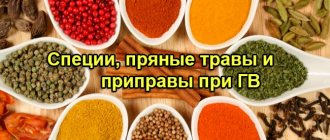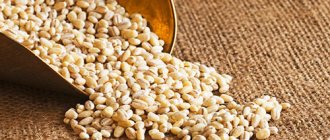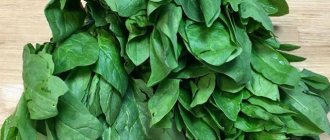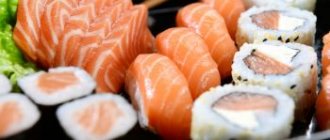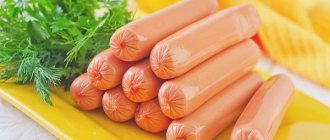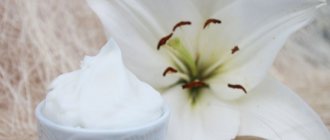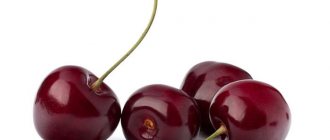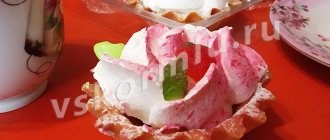Is it possible to eat honey during breastfeeding?
Honey is a valuable product with a wonderful composition. It is used in folk treatments for many diseases. Despite all the benefits, the use of honey in the diet of a nursing mother is very limited. This is because it contains substances that can cause a severe allergic reaction not only in the mother, but also in the child. This does not mean that sweets are prohibited. It is important to adhere to all the rules of use and introduction into the diet, then you will receive all the beneficial substances while minimizing the risks.
Honey should be introduced into the diet of a nursing mother very carefully, since there is a high probability that the baby will develop an allergy to the components.
In the first month after birth
In the first month after birth, the baby’s gastrointestinal tract gets used to the new type of nutrition. To easily adapt the baby to the external environment, it is recommended to minimize the risk. During this period, you should not eat allergens or foods that can cause digestive problems. Honey, as a strong allergen, is prohibited from being eaten in the first month.
When can honey be introduced into the diet of a nursing mother and how to do it correctly?
If you're looking for a sweet option while breastfeeding, honey is not your option. Since it is a strong allergen, it is best to fully introduce it into the diet after six months. But, in general, the introduction of honey into the diet of a nursing mother is allowed at 2–3 months . It is recommended that a nursing woman try honey on the tip of a teaspoon for the first time. An allergic reaction or other problems usually appear within 1-2 days, but it is best to monitor your baby for about a week. The amount of product cannot be increased until six months. You can eat treats during this period no more than 2-3 times a week.
After six months, you are allowed to gradually increase the dosage to a teaspoon and eat it more often.
| Baby's age | How much can you eat |
| 1 month | Forbidden. |
| 2 months | Not recommended. |
| 3 months | On the tip of a teaspoon several times a week. |
| 4 months | On the tip of a teaspoon several times a week. |
| 5 months | On the tip of a teaspoon several times a week. |
| 6 months | 1 teaspoon several times a week. |
The benefits of honey during breastfeeding
Honey has been known for its beneficial properties for a long time. It is used for treatment, in cooking or as a delicacy. The benefits of honey are confirmed by scientific research. It contains B vitamins, vitamins A, C, K and others. In addition, the product is rich in minerals: iron, potassium, manganese, chromium. Honey contains lactose, pectin, fructose and organic acids. The valuable components of sweetness are well absorbed by the body, so the product is known for the following properties:
- improving the taste of breast milk, honey makes it sweet;
- increasing the quantity and nutritional value of milk;
- replenishment of vitamins and minerals in the body of a nursing woman, depleted by pregnancy and childbirth;
- calming effect on mother and baby;
- normalization of the nervous system;
- help for depression;
- improved sleep;
- increased metabolism;
- normalization of blood sugar;
- prevention of thrombosis;
- normalization of hormonal levels;
- improving the functioning of the reproductive system;
- increasing endurance and performance;
- improvement of blood clotting;
- improving the condition of bones and teeth;
- cholesterol reduction;
- improving the functioning of the cardiovascular system;
- normalization of digestion;
- help with constipation, etc.
Manifestations of food allergies in a child
Some types of products can cause allergic reactions in a child.
Therefore, it is recommended to keep a food diary so that you can easily track which food could be the cause of the allergy and temporarily eliminate it from your diet. What symptoms may allergic manifestations show:
itching of the skin, rash, swelling of the eyes, lips or face, sneezing, cough, digestive system disorders (vomiting, constipation, diarrhea, flatulence), loss of appetite, eczema.
When and why should you not use honey while breastfeeding?
Like any product, honey has harmful properties and contraindications for use. The harm of the product is as follows:
- The natural product may contain the bacterium that causes botulism. It does not pass into breast milk and will not harm the baby, but it is very dangerous for the mother.
- The product from the apiary may contain pathogenic microorganisms that can harm the baby.
- The product is classified as an allergen.
- Consuming honey in large quantities can lead to weight gain, so the product is not recommended for people who are obese or losing weight.
- May cause negative reactions from the gastrointestinal tract.
- The delicacy causes a sharp jump in blood sugar, so it is prohibited for people with diabetes.
- It is forbidden to eat honey if you have high blood pressure.
- Excessive consumption of sweets negatively affects the condition of tooth enamel.
- Heating honey to 60 degrees not only destroys most of the beneficial components, but also leads to the release of oxomethylfurfural, a toxic substance.
Is honey an allergen?
The most well-known negative property of honey is its allergenicity. It can lead to rashes, itching, coughing, and even anaphylactic shock. That is why you need to be especially careful with it during breastfeeding, and introduce it into the diet the later, the better. Studies have shown that an allergic reaction does not occur to honey, but to plant pollen that gets into it. Despite the fact that honey is dangerous and a strong allergen, a small percentage of people experience a negative reaction to the product.
When is honey removed from breast milk?
Products pass into breast milk within 15–30 minutes after consumption, as they are digested in the stomach. Typically, the gastrointestinal tract spends up to a day digesting natural products. 24 hours after consumption, the allergen from honey stops entering the bloodstream, which means it no longer passes into breast milk. Only drugs and products of synthetic origin take longer to digest.
Calorie content of a nursing mother's diet according to WHO
Lactation is an extremely energy-intensive process. Every day a young mother needs to spend an additional 625 kcal. It is estimated that the optimal expansion of caloric intake should occur within 500 kcal. This applies to the first months, but the second half of the lactation period requires an additional 400 kcal.
The remaining calories should come from fat reserves that were formed during pregnancy. It is for this reason that many nutritionists do not recommend low-calorie diets during breastfeeding, since moderate nutrition itself causes an energy deficit.
It is worth mentioning that those young mothers who are not overweight or even excessively thin should consume an additional 600 kcal daily in full.
In addition to increasing the need for energy-rich food, the body of a nursing mother also requires more different nutrients. This happens because during milk production, the body gives up its own reserves of vitamins and minerals, even if they do not come from food.
That is why it is important to increase the consumption of healthy foods so as not to encounter a deficiency of vitamins and microelements in your own body.
What kind of honey can a nursing mother eat?
There are many types of honey, each with a different taste and aroma. The properties of the species are also slightly different. If you decide to eat honey during breastfeeding, it does not matter which variety you choose, it is important that it is a natural product.
Buckwheat
The buckwheat look is not the most beautiful. It is resinous black, the consistency of the product is heterogeneous. Buckwheat honey has a tart aroma and crystallizes quickly. This product is considered the most useful, it contains the largest amount of valuable substances. It contains a lot of iron, so the product has a beneficial effect on blood composition. In addition, it has a good effect on the cardiovascular system, helps with stress, depression, etc.
Donnikovy
Sweet clover honey in its pure form is rare, since sweet clover blooms for a long time, and during this time bees collect a lot of nectar from other flowers. This type of honey is known for being less sweet than others, as its sweetener is primarily fructose rather than sucrose or glucose. The product has many beneficial properties, but the most famous are its effects on the gastrointestinal tract, bladder and liver.
Chestnut
Few people choose this type of honey because of its characteristic bitterness and not at all sweet taste. However, it is a very useful product. There are wild and seed chestnuts, depending on which plant the nectar is collected from, the honey can be white or very dark. Light is considered more useful. This product is known for its antibacterial properties. It works well in the fight against viruses and bacteria, and is actively used for colds. Chestnut honey is good for coughs, promotes wound healing, etc.
Chestnut honey is not sweet, but it is good for colds and for increasing the body's resistance to viruses.
Acacia honey
Acacia honey is harvested in May. Its color depends on the variety of acacia from which the bees collected nectar: from almost white to bright yellow. It is moderately sweet, but not bitter. Its most famous quality is its rich aroma. Fructose predominates in the product, in addition, it is the least allergenic variety. It is believed that this variety contains the largest amount of vitamins and minerals.
Fireweed
This type of honey is one of the healthiest. It is used to treat many diseases. It looks light yellow, but may have a greenish tint. It crystallizes quickly. The structure of honey is heterogeneous. Due to these factors, many people are afraid to buy this type of honey.
In the honeycomb
Honey in combs is the safest from the point of view of possible counterfeiting. You can be sure that this is a natural product. In addition to the beneficial properties of honey, the product is distinguished by the following valuable components: beebread, pollen, wax, propolis and tartar. Eating honey in this form is beneficial for the condition of the oral cavity and teeth. If you regularly chew honeycombs with honey, you can slightly whiten your tooth enamel. Honeycombs ensure the sterility of the product; it is free of bacteria and other pathogenic microorganisms.
Lime
This is the most popular variety of product. It has a pleasant aroma. Some people note notes of mint in it. This honey can be creamy white or golden in color. It has a good effect on the immune system, helps cope with infectious diseases, and has an antipyretic, antibacterial, and anti-inflammatory effect.
Linden honey is most popular among nursing women due to its taste and aroma.
Composition of the product
Honey is a source of “fast” carbohydrates, since it consists of 82% carbohydrates (38% fructose, 31% glucose, 9% other sugars). It also saturates the body with vitamins, antioxidants and minerals.
100 g of raw product contains:
Minerals:
- potassium – 52 mg;
- calcium – 6 mg;
- phosphorus – 4 mg;
- sodium – 4 mg;
- magnesium – 2 mg;
- iron – 0.42 mg;
- zinc – 0.22 mg.
Vitamins:
- ascorbic acid (C) – 0.5 mg;
- niacin (B3) – 0.121 mg;
- pantothenic acid (B5) – 0.068 mg;
- pyridoxine (B6) – 0.024 mg;
- riboflavin (B2) – 0.038 mg;
- folacin (B9) – 2 mcg.
Important! This product is not recommended for children under three years of age.
It also has medicinal properties and is used for many diseases. It has anti-inflammatory, antimicrobial and antibacterial effects, and is also useful for all human organs and systems, improves immunity, and improves well-being.
In what form can you eat honey while breastfeeding?
It is recommended to eat honey exclusively in its raw form. Using the product in baked goods or heating it to high temperatures makes the product hazardous to health. Therefore, you can eat it yourself, add it to warm drinks, and use it in desserts that do not require heat treatment.
With tea for colds
Tea with honey has antibacterial, antipyretic, diuretic, and anti-inflammatory effects. It stimulates the immune system. This helps fight pathogenic microorganisms. The product is actively used for ARVI.
It is recommended to add honey to a drink that has cooled to 50 degrees or eat it along with the liquid so that the honey itself does not heat up. Since a nursing mother can only eat a very small amount of honey, it is better to eat it as a bite with a drink. The effect of this tea will be enhanced by adding lemon, ginger and other spices. When breastfeeding, they can only be used if they are already present in the diet.
With hot milk and soda at temperature
Many people know about the benefits of milk with honey. For maximum benefit, boil the milk, wait until it cools to 50 degrees, and only then add soda and honey. This drink improves the functioning of the immune system, has an anti-inflammatory and diaphoretic effect. It should be remembered that it is not recommended to drink it when coughing, as it stimulates the secretion of mucus. This worsens the patient's condition. It is forbidden to drink this medicine if you have a sore throat, since pathogenic microorganisms actively multiply in warm milk.
If a mother has a fever while breastfeeding, then a natural remedy such as honey with milk and soda will help.
With ginger and lemon
Honey, ginger, lemon are products that go well together, which is why they are often used in cooking. Due to the beneficial properties of each component, their mixture is also widely used in folk medicine. They strengthen the immune system, have a good effect on the gastrointestinal tract, improve the functioning of the nervous system, help in the treatment of acute respiratory viral infections, and cleanse blood vessels. Many people use the mixture for weight loss. It should be remembered that lemon and ginger are very active components that are included in the list of allergens, so a nursing mother can be treated with this medicine only after she has introduced all the components separately into her menu.
With walnuts
Walnuts with honey are used to treat viral diseases, the respiratory system, as well as to normalize the reproductive system and hormonal levels in women and men. These products complement each other and enhance the effect. To prepare the medicine, a large amount of honey is needed, so it is not recommended to use it until six months after childbirth.
Cinnamon
Cinnamon with honey is primarily known to women as a means for weight loss. It improves metabolism. In addition, this mixture has a good effect on the immune, nervous, and cardiovascular systems. Cinnamon is a very active and aromatic spice, so unless you have used it in your diet, you should not use it in medical treatment. The following recipe can be considered the most gentle for breastfeeding.
Compound:
- Cinnamon - 1 tsp.
- Honey - 2 tsp.
- Water - 1 glass.
Preparation: Mix honey and cinnamon in warm water.
Application: Drink in the morning on an empty stomach half an hour before meals.
With radish for cough
Many people know about the effectiveness of this remedy. It is best not to use it until six months, since the amount of honey and frequency of use exceeds the recommended norms for breastfeeding.
Compound:
- Radish - 1 medium.
- Honey - 1 tbsp. l.
Preparation:
- Rinse the radish well.
- Cut off the cap from which the tops grew.
- Cut a “plate” inside the fruit.
- Pour honey into it.
- Cover with radish lid.
- Place in a cool place overnight.
Application: Drink 1 tsp. medications three times a day.
In baking
The use of honey in baking is not recommended, which is why it is recommended to mix artificial honey into the dough, not natural honey. Piece honey is artificial honey, which is made from sugar-containing raw materials (melons, watermelons, cane or beet sugar, corn) and tinted with natural (St. John's wort, tea infusion, saffron) or artificial dyes. Organic honey can be used as a spread, in creams, or as a filling that is added to finished baked goods.
Honey cake (Medovik)
Honey cake is one of the most famous cakes that housewives know how to prepare. Previously, only natural honey was always used in its preparation, but today everyone unanimously says that you need to take only an artificial analogue.
The product is high in calories. In addition, it can cause allergies in the baby, since more honey is added to the dough than is allowed during lactation. It is best to introduce such a cake for a nursing mother into the diet closer to the year.
Sea cucumber with honey
Trepang with honey came to us from Chinese medicine. It is used in the treatment of many diseases. The use of the medicine by pregnant and lactating women is prohibited.
With beebread
Bee bread is fermented flower pollen. The use of such a product for breastfeeding is undesirable, since it is even more allergenic than just honey. After consultation with a doctor, the introduction of honey with beebread into the diet may be allowed after six months.
Honey with beebread is undesirable when breastfeeding because it contains even more components than just honey and therefore the risk of allergies in an infant increases even more.
How to use honey to increase lactation?
Despite the allergenic nature of honey, it helps improve lactation. The sweet product stimulates the production of breast milk and increases its nutritional value. In addition, honey affects the taste of breast milk, making it sweeter. For maximum effect, drink warm tea with honey 30 minutes before feeding your baby.
Lactation tablets with honey
Pharmaceutical companies have noticed the beneficial effects of honey on breastfeeding, so they began producing pills to improve lactation based on it. One of these drugs is Apilak. Such tablets, unlike honey itself, do not cause allergies in the baby. It is recommended to take the medicine for 2 months, one tablet three times a day.
Does honey help stop lactation? Cabbage and honey compress
Honey stimulates lactation, so using it to stop breast milk production is counter-intuitive. When a mother decides to stop lactation herself, not due to lack of milk, she always faces the problem of congestion, lumps in the breast and other similar problems. Most often, you can get rid of them by partially expressing milk. But sometimes aids are needed. One of them is cabbage compress. Pour boiling water over the cabbage leaf for a few minutes. Take it out, beat it a little with a hammer and brush with honey. Apply the compress only when it is cold. Warmth stimulates even more milk production.
07.01.2015
Son, your mother couldn’t leave you without milk. I may be on a strict diet, but not a single delicious thing in the world can compare with the happiness I feel when I feed you.
You sleep and smile quietly in your sleep. Perhaps you dreamed of a new toy, carefully bought by your dad in a children's store, or of our walks with you through the winter forest. Oh, what is this? You smacked your lips, opened your mouth, looking for me.
I'm coming to you, son. You sigh with relief and eat - mom is nearby, mom is delicious, you can sleep. And now I smile, burying my face in your fluffy crown: here it is, HAPPINESS - breastfeeding your beloved child! Sleep, my joy, sleep, my little one.
How else can you use honey?
Honey can be used not only internally, as a treat or as a medicine, but also on the skin. The product is widely used in hair and face masks. It is used for massage, especially for weight loss. Additionally, honey is used topically to treat skin problems or hemorrhoids.
Honey cake for lactostasis - a folk remedy for mastitis
There are many recipes for such flatbreads. Women often note that they were the ones who helped them cope with lactostasis at one time. Rye flour and honey are the most popular and easiest to prepare. To make a flatbread, mix rye flour and honey. Apply a compress to your chest and cover with cling film. You need to walk like this for several hours. Usually 3-4 applications help to completely get rid of the problem.
Honey massage during breastfeeding
Honey massage, contrary to popular belief, cannot cause allergies in a child. It is allowed to be done while breastfeeding, except in the following cases:
- caesarean section until wounds heal;
- varicose veins;
- vascular network;
- allergies in a woman;
- wounds and abrasions at the massage site;
- raised moles at the massage site;
- cysts and neoplasms in the pelvis and abdomen;
- tendency to bruise.
Honey wraps with mustard
Honey wraps with mustard are actively used for weight loss and cellulite, which often appears in women during pregnancy and breastfeeding due to hormonal changes. Using this method of losing weight has the same contraindications as honey massage, which we described above. It can be done to a nursing woman. In addition to the weight loss effect, the product has a good effect on the condition of the skin, improves blood flow and metabolic processes in the subcutaneous layers.
For hemorrhoids
After childbirth, many women are bothered by hemorrhoids. To treat hemorrhoids, honey can be used internally and externally. You can use infusion, enemas, suppositories, compress or honey-based ointment. The easiest to prepare is a compress made from honey and aloe. Take plant juice and honey, mix in equal proportions. Soak a cotton pad, cotton pad or bandage in the solution and apply to the sore spot for half an hour three times a day.
External use
Due to its properties, honey is also used as an external remedy. It is known for wound healing and local warming properties. For a nursing mother, it can be used for stagnation of milk, as a folk remedy.
Honey cakes for lactostasis
During the lactation period, many mothers encounter such an unpleasant phenomenon. A compress of honey cakes is used as part of the therapy. To do this, you need to use a candied product. You need to roll a ball out of honey and knead it into a flat cake and apply it to the problem area for several hours.
Cabbage leaf with honey
To improve the result, you can use cabbage leaves as an adjuvant. It will help relieve swelling. Before applying it, you need to knead it to release some juice. Then you need to put a honey cake inside the sheet. Leave the compress on the sore breast for several hours and continue feeding as usual.
The listed measures, together with other manipulations to prevent lactostasis, will help cope with the disease.
During lactation, it is necessary to take into account the needs of the baby, but also not to forget about the needs of the young mother. Therefore, it is necessary to correctly create a menu that takes into account the interests of everyone.
How to choose good honey? Signs of real natural honey
A nursing woman needs to approach the choice of foods with particular seriousness, because everything that the mother eats goes to the baby. Honey is no exception. We have identified several signs of good honey that you can focus on when choosing.
- Sugariness. Natural honey is most often candied several months after it is collected. If you buy a product in season, it may be liquid, but when you come across liquid honey in January, know that it was most likely heated. It’s unlikely that anyone will tell you what technology was used to heat the honey. As you know, at high temperatures honey loses its properties.
- Uneven color may indicate that the honey has been heated or something has been added to it.
- Not dilution. If water was added to honey, it will not flow in a viscous stream and “fold” smoothly. The right honey will curl onto a spoon. The presence of foam on the surface also indicates that the product has been diluted or is unripe.
- Strong strong odor. This is what characterizes good natural honey. Only acacia honey has a milder aroma.
- The natural delicacy is moderately sweet and cloying. Honey that is too sweet is often unnatural.
- When added to a warm drink, it becomes cloudy.
- The presence of traces of heterogeneity or layers indicates the addition of some substances, for example, starch.
Choosing quality honey
In order for it to be beneficial, it is necessary to approach the choice thoroughly, let’s pay attention to the main characteristics.
- A quality product should have a sweet, recognizable taste. The color range of honey can range from light gold to brown. This quality is influenced by the type of plant from which the bees collected pollen, for example, buckwheat has a dark brown color, and linden has a golden color.
- The aroma of the product is also recognizable; it should contain floral notes. It should not contain any foreign odors: chemical, fermentation or smoke.
- Attention should also be paid to transparency. Good honey should be transparent and not contain any unwanted impurities. Small air bubbles and pollen may be included, but they should not affect the appearance.
Reviews from those who ate honey while breastfeeding
Sasha, 25 years old
To be honest, I didn’t think about the fact that honey is not allowed when breastfeeding, it’s natural. I ate it, well, not from the maternity hospital, but from a month ago, exactly as my grandmother told me from the village. I didn’t have any allergies, I had a lot of milk.
Kira, 34 years old
I tried not to eat anything allergenic during breastfeeding, including honey. But at 4 months I got sick. You can’t take much medicine; what you can take doesn’t really help. I made myself turnips with honey. At your own risk, so to speak. It helped me, it didn't hurt the baby. After that I already ate honey.
08.09.2014
And there's not enough milk. You eat, get tired, fall asleep half-starved, wake up half an hour later and eat again. The doctors’ verdict is very weak weight gain, we add the mixture. And again, dad tried - he bought a breast pump for mom to help. And before each bottle feeding, I feed you milk. It must be! I won't let him go to waste! A mixed diet is better than no mother's milk at all. We can handle it, we are strong!
And only a year later I find out that you have a short frenulum of the uvula, and it was just very difficult for you to eat, but you tried your best, and with our joint efforts we preserved mother’s milk.

